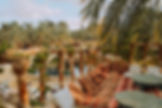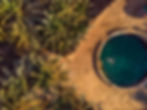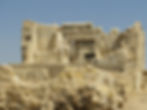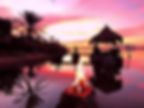10 Most Unforgettable Things to Do in Siwa Oasis, Egypt
- Local's Guide To Egypt
- Jan 6, 2025
- 6 min read
Updated: Mar 25, 2025

If you’re reading up about Siwa Oasis, then it’s safe to say you have a taste for adventure, and adventure you shall get!
Siwa is one of the remotest, most untouched destinations in all of Egypt. It’s deep in the Great Sand Sea of the Western Desert, and was isolated from the rest of Egypt until the 1980s when a road was built between Siwa and Marsa Matrouh on the Mediterranean coast. It takes a whopping 10 bumpy hours by car or bus from Cairo to reach the oasis, and only private planes fly in and out of their tiny military airport.
So yup, safe to say it’s pretty out there and unlike anything else you can experience in Egypt (or the world, for that matter).
So if you DO decide to lace up your adventure shoes and take this once-in-a-lifetime trip to Siwa Oasis, make sure you experience the very best of what Siwa has to offer!
Here are some of the best, most unforgettable things to do in Siwa:
1. Camp under the Milky Way

You may have been camping before, but trust us when we tell you that camping in Siwa is a whole different experience. Because Siwa is so isolated and so far from lights and pollution, the Milky Way literally lights up the night sky and the stargazing is incredible. Egypt’s Great Sand Sea is one of the best places in the world for astrophotography, and shooting stars are a constant - imagine sleeping directly underneath a canopy of stars!
Read more: 9 Beautiful & Remote Camping Spots in Egypt
2. Explore the Shali Fortress

Built in the 11th century as a fortress around the village to protect its inhabitants from nomadic invaders, the skeleton of the Shali Fortress still exists today, more than 800 years later. This is kind of amazing considering it was made of salt and mudbrick (‘karshif’) and all but destroyed during heavy rains and floods in the 1920s, followed by bombing in WWII. You can roam the ruins of the village and fortress and see the still-standing Shali Mosque, built in 1203 AD – the original builders’ handprints are still visible on its wall.
3. Visit ancient tombs at the Mountain of the Dead

Siwa’s Mountain of the Dead (‘Gebel el Mawta’) is a necropolis of rock tombs built into the mountain during the 26th Dynasty of the Pharaohs (basically the end of native Egyptian Pharaonic rule) and through the Greco-Roman era. Fast forward millennia later, local Siwans hid in the mountain tombs to take cover from German, British & Italian fighting during WWII.
The most interesting tomb at Mountain of the Dead is that of Si Amun, dating back to the 3rd century BC. Although it was looted in antiquity like the other tombs, you can still see the paintings and wall art until today. Another interesting tomb with visible art is the Tomb of the Crocodile, given that moniker because the name of its original owner is unknown.
You may also like: 8 Best Ancient Tomb Sites in Egypt
4. Swim in Siwa's incredible salt lakes

Siwa Oasis is known for its dates and olives, but also for something else – salt. Siwa has a natural abundance of raw rock salt, which has been used by locals for centuries for building materials, furniture and food conservation (and Siwans have recently begun to export the salt). Fresh water from Siwa’s underground natural springs have mixed with the salt to create dozens of crystal-clear salt lakes and pools, which are just about as salty as the Dead Sea. These salt lakes are fun for swimmers of all levels (because the salinity essentially forces you to float) and have recently become an Instagram sensation.
5. Get your heart racing with a desert safari

While most people think of animals when they hear the word ‘safari’, a desert safari in Siwa means essentially dune surfing in 4x4s. An experienced local driver will take you out to the towering sand dunes of the Great Sand Sea, and he’ll speed up and down the dunes in a kind of desert roller coaster. It’s fun bordering on terrifying sometimes because the dunes are so steep, and there’s nothing protecting you except a flimsy seatbelt (if even that). But once you get over the fear, the adrenaline rush has nothing like it.
You may also like: 7 Extreme Adventure Experiences in Egypt for Adrenaline Junkies
6. Swim in Cleopatra’s Spring & other hot springs

Siwa Oasis is home to around 300 freshwater springs, both hot and cold. One of the most famous is Cleopatra’s Spring, also known as Cleopatra’s Pool or Cleopatra’s Bath. Legend has it that Cleopatra herself used to bathe here, hence the name, but there’s no actual evidence of it. In any case, it’s a pleasant place to swim in the hot spring, and it’s surrounded by little shops and cafes shaded by palm trees.
Local tip: Siwans are a conservative culture, and Cleopatra’s Bath isn’t as isolated as the salt lakes, so it’s not the place where you’d want to break out the string bikinis. You don’t have to be fully covered or anything, but we recommend your more modest swimsuits just out of respect for their culture.
7. Explore the Temple of the Oracle of Amun

Another relic from Pharaonic times, the Temple of Amun (or more famously known as the Temple of the Oracle) was built in the 26th Dynasty but remained strong throughout the Greco-Roman era. While several myths surround why the temple was originally built, its main claim to fame is that when Alexander the Great conquered Egypt in 331 BC, he traveled specifically to Siwa to consult the Oracle at this temple over whether or not he was truly the son of Zeus (Amun). The ruins of this temple have survived over 2,000 years but it’s not sure for how much longer, because the rock underneath has begun to crack. So see it while you still can!
You may also like: 12 Most Impressive Ancient Egyptian Temples Still Standing
8. Natural therapy with sand baths at Dakrour Mountain

Yep, people actually pay to get buried in hot sand – what may sound like torture to some people is actually treatment of choice for others. During summer, with soaring temperatures, people in search of all sorts of pain relief do 3 to 5 days of hot sand baths and therapy led by experienced health workers in the healing sands next to Dakrour Mountain. These sand baths are reported to treat arthritis, rheumatism, joint pain, and some even claim infertility. Patients are buried neck-deep in hot sand for 10 to 15 minutes, followed by warm drinks and rest in a tent. No cold showers, cold drinks or AC are allowed throughout the 3-5 days.
9. Disconnect at an ecolodge

It’s easy to get caught up in all the activities Siwa has to offer, but if you’re rushing from one sight to the next, you start to forget what Siwa is truly all about: an escape from all the trappings of your crowded, fast-paced, plugged-in everyday life. Siwa is home to several beautifully tranquil ecolodges, most of which only have electricity for a couple of hours a day. They’re the perfect place to reconnect with nature and quiet your mind, far away from it all (both literally and metaphorically).
You may also like: 7 Boutique Hotels in Egypt for a More Personalized, Unique Trip
10. See a breathtaking sunset at Fatnas or Taghaghien Island

We know, we know. The sun sets every day. But we dare you to see a sunset quite like the ones from the vantage points of Fatnas Island or Taghaghien Island, both facing west on Siwa Lake. Viewing chairs are set up, and you can buy drinks to sip on as the sun goes down (local tip: bring mosquito spray though, and lots of it!)